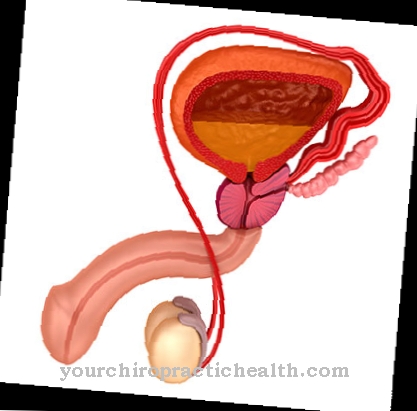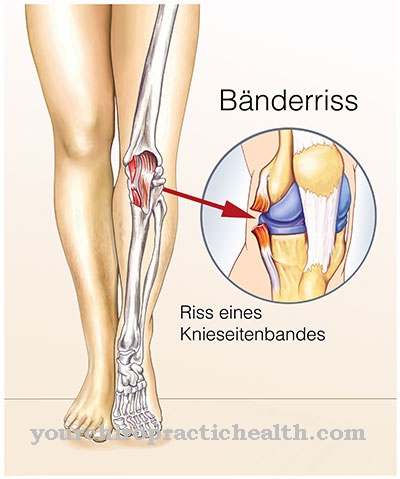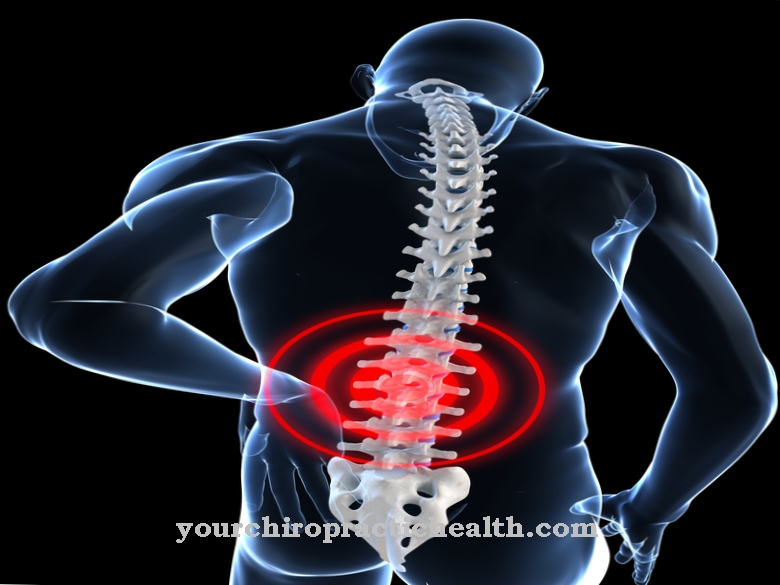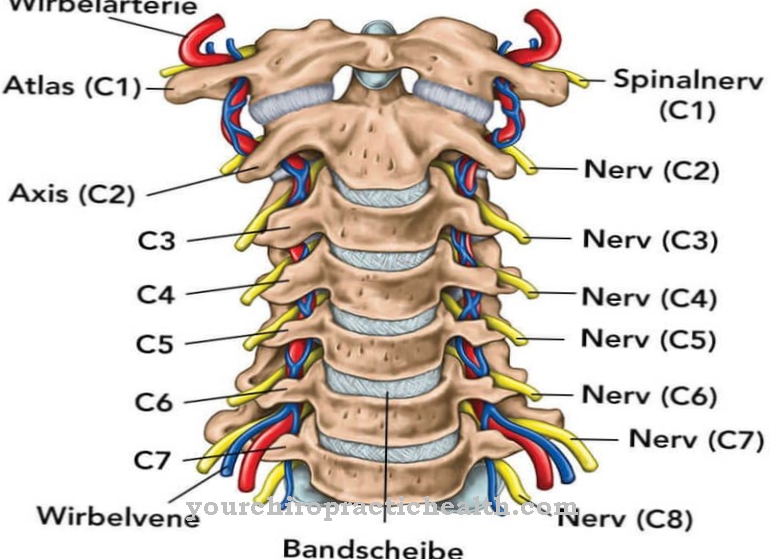At Mouth rot, medicinally as primary herpetic gingivostomatitis called, it is an inflammatory infection of the mouth. The disease occurs predominantly in children, but it can also be transmitted to adults in principle.
What is mouth rot?

© designua - stock.adobe.com
The Mouth rot is triggered by viruses. The symptoms develop from the first infection with herpes viruses. The main age of disease is between six months and five years. The sick people are rarely over 20 years old.
Infants are particularly hard hit if the disease occurs in the first few weeks of life. Oral rot is contagious, so affected people should avoid contact with other people, especially children. The transmission takes place via droplet infection. For example, sharing cutlery is a common cause of contagion.
causes
Mouth rot always arises when the initial infection with herpes manifests itself in the oral cavity. The HSV-1 herpes virus is responsible. In rare cases, however, the HSV-2 virus can also trigger the disease.
Oral rot is highly contagious, so transmission from an infected person is one of the most common causes of disease. Metropolitan areas are mostly kindergartens and schools. Here the oral rot spreads rapidly, the incubation time is very short with one to three days.
It should be noted that not every infection with oral rot also leads to the development of the typical symptoms. The majority of all infected people do not show any symptoms, but still represent a risk of infection for other people.
Symptoms, ailments & signs
The first symptoms of oral rot appear just a few days after the initial infection. High fever attacks are typical for aphthous stomatitis. At the same time, like the flu, patients feel very exhausted and have a reduced ability to concentrate.
As a direct result of the first signs of illness, small blisters appear in the area of the oral cavity or lips. There is also a prominent reddening of the oral mucosa, which is associated with intense, burning pain for the sick. Unfavorable courses also affect the gums, the entire oral cavity is then affected. After a period of maturation, the bubbles burst and release a secretion.
What remains is painful scars with a reddish border and a light coating in the center. In terms of their characteristics, these vary from punctual to lens-sized areas. Doctors refer to these injuries as aphthae. Further consequences of the infection are expressed in an increased flow of saliva and a distinctive bad breath.
Because of the high level of suffering, toddlers often avoid eating. The external signs of the disease also include swollen lymph nodes on the neck. With light pressure, patients complain of pain in the corresponding areas. In some cases, there is also an increased tendency to nausea with possible nausea. A secondary spread of the herpes virus from the oral mucosa into the nasal cavities can occur through smear infection.
Diagnosis & course
The diagnosis Mouth rot can usually only be asked after a laboratory analysis, as other diseases in the oral cavity trigger similar symptoms. The severity of the disease varies; infants in particular often suffer from more severe symptoms than older children.
At the beginning of the oral rot, the body temperature is usually increased, the children refuse to eat and are tearful. The rejection of food and often also of liquid results from the burning pain in the mouth, which can occur before the first blisters are visible. Only in the course of the disease does the herpes infection appear directly on the mucous membrane.
Small, painful blisters form on the gums, lips and tongue, which are the main reason for refusal to eat. On average, an infection with oral rot lasts for at least a week, only then do the blisters slowly dry out and the pain decrease. In adults, the disease usually has significantly fewer symptoms than in smaller children.
Complications
Oral rot is a disease that naturally also has various complications. As a rule, mouth rot is noticeable as small blisters that burst after a short time. At the same time, these small vesicles cause severe pain, so that the person concerned must expect considerable complications when eating.
In particularly bad cases, the burst vesicles can even develop into open wounds, so that there is an increased risk of inflammation. An open wound is very susceptible to viruses and bacteria. If these have lodged in the open wound, pus can even develop. The formation of pus is always a sign of a marked worsening of the existing inflammation.
If you want to avoid further complications at this point, you should consult a doctor as soon as possible. A quick and effective recovery can only take place by taking appropriate medication. In rare cases, viruses and bacteria can get into the bloodstream of the affected person through the open wound.
This can lead to an infection, which can lead to headaches, high temperatures, nausea and vomiting. Because of this, mouth rot should be treated very quickly by an appropriate doctor. The above-mentioned complications can only be avoided if treatment takes place promptly.
When should you go to the doctor?
A visit to the doctor is advisable as soon as there are persistent discomfort in the mouth. Pain, changes in the mucous membranes, bad breath or a general malaise should be examined and treated. If the symptoms in the mouth worsen or spread, a doctor will be needed. Increased salivation, redness of the gums and loss of appetite indicate a health disorder that needs treatment.
If there is inflammation or infection in the mouth and throat, discomfort when cleaning teeth, as well as nausea and vomiting, a doctor should be visited. Canker sores, injuries in the mouth and hypersensitivity to the intake of food are signs of a disease that requires treatment. If the nasal cavities or the throat are also affected, a doctor should be consulted immediately. Scarring in the mouth, the formation of vesicles and defects in existing dentures are worrying.
A doctor should be consulted in the event of persistent refusal to eat or cleaning the teeth. A surgeon should be presented with pus in the mouth or repeated taste of blood. In severe cases, the affected person is at risk of sepsis or dehydration. Both represent life-threatening conditions of the organism, which must be treated early by a doctor so that there is no premature death.
Treatment & Therapy
Treatment of the Mouth rot primarily serves to relieve symptoms and pain. Adequate fluid intake is particularly important for children, as otherwise the body can become dehydrated.
The children must be encouraged to drink, otherwise they will develop an avoidance pattern due to the pain. Doctors prescribe pain relievers such as ibuprofen or paracetamol against the pain in the mouth, and local anesthetics are applied to the blisters. In the case of severe oral rot in adults, stronger pain relievers such as Novalgin are sometimes used.
For local disinfection of the oral cavity, rinsing with chlorhexidine is indicated. Even if food intake is painful, it must not be neglected under any circumstances. In the case of severe blistering in the mouth, giving liquid food can cover the daily calorie requirement. Malnutrition must be avoided at all costs during the course of the disease, as the immune system would be weakened even further and there is a risk of severe oral rot.
You can find your medication here
➔ Medication for bad breath and bad breathOutlook & forecast
Oral rot has a very good prognosis and, if left untreated, heals within a few weeks. It often occurs in children as a manifestation of a herpes infection. Although the mouth rot is very unpleasant and makes life difficult for those affected due to the pain, it is rightly considered harmless. After a few days of fever and the formation of blisters, it takes about a week to ten days for the disease to heal again.
The prognosis for affected babies is very rarely worse. However, this is only the case in newborns in the first few weeks of life, where the infection can also affect the eyes or the brain. Medical treatment is urgently required here.
In adults, mouth rot - just like cold sores - can occur again and again. Some people experience this a lot, others don't. In these cases, too, the condition heals on its own within weeks. A possible treatment is always of a purely symptomatic nature and only alleviates the suffering. The prognosis for healing depends on a number of factors, such as stress and hydration.
prevention
Home remedies ↵ for bad breath A Mouth rot does not arise through the fault of those affected, so it is hardly possible to prevent an infection. If cases of oral rot are known in the vicinity, contact with the sick person should be avoided if possible. The sharing of cutlery or drinking bottles should not be done, as the viruses spread very quickly and infection occurs. Basically, the earlier oral rot is treated, the faster the disease disappears. For this reason, a disinfecting therapy should be started even with moderate pain in the oral cavity.
Aftercare
As soon as the blisters in the mouth have dried up and the canker sores have healed, the affected child can return to the care facility. It is then no longer possible to infect other children. This is usually the case after a week to ten days. In adult patients, healing can take up to 20 days.
A separate follow-up care is not necessary, as there are no more symptoms after healing.The herpes virus that is causing it cannot be cured, however, after the initial infection, a new outbreak of oral rot is no longer possible. The virus withdraws into the nerve nodes and does not cause any further symptoms for the time being.
The virus can only break out again when the immune system is weakened or there is severe psychological strain such as stress or grief and then becomes visible as a cold sore, which in turn requires the measures already mentioned to alleviate and cure it. It is therefore advisable to regularly strengthen the immune system and avoid stress. Although the herpes virus can only survive for a short time outside the body, the toothbrush used during the illness must be disposed of in order to prevent the virus from being passed on accidentally.
You can do that yourself
Mouth rot usually goes away on its own after two to three weeks without the need for medical treatment. The patient must, however, take it easy and should keep enough bed rest.
Affected children often refuse to eat because of the pain in their mouth. Parents should pay attention to any deficiency symptoms and, if in doubt, take the child to the pediatrician. Appetizing teas and antipyretic agents can reduce the symptoms. The diet should consist of liquid or pulpy food as well as mild and cool foods. The child must also drink enough water, and a straw can make it easier to drink. In consultation with the doctor, mouthwashes with active ingredients such as chlorhexidine can also be used. Medicines with the active ingredient lidocaine can be applied locally and promise rapid symptom relief. Furthermore, the aphthae should be treated with a disinfecting solution.
In severe cases, mouth rot requires medical treatment. If the symptoms are very intense or if a child no longer absorbs fluids due to the pain, a clinic should be visited. In the case of newborns, close monitoring by a specialist is indicated due to the high risk of spread.



























